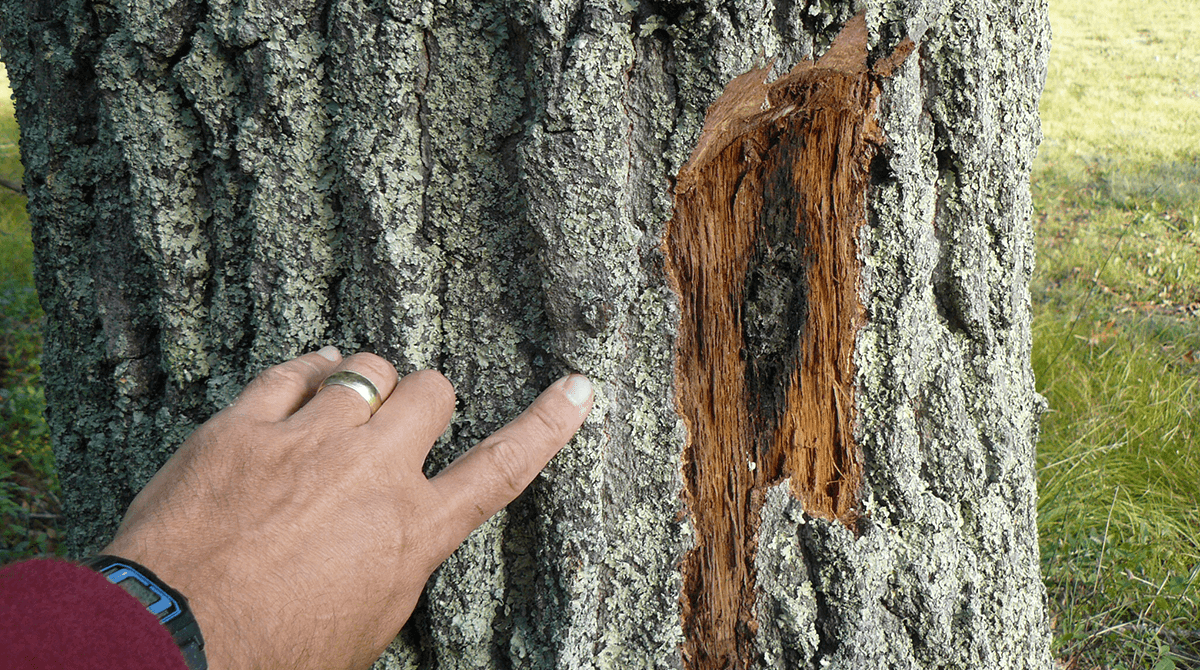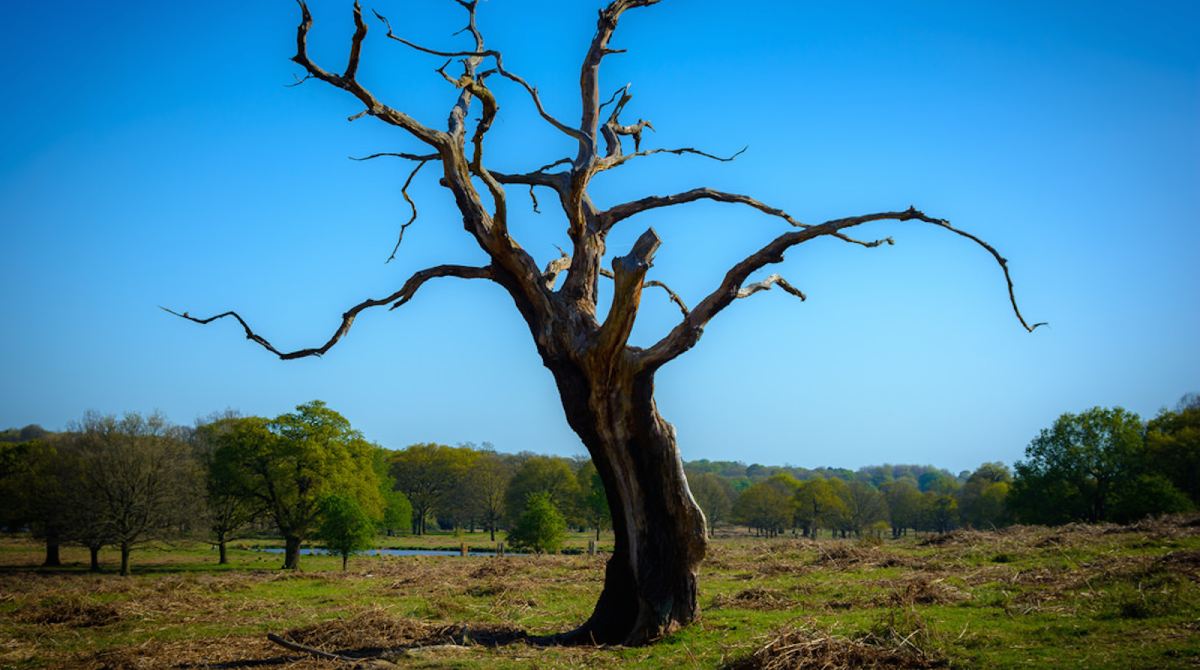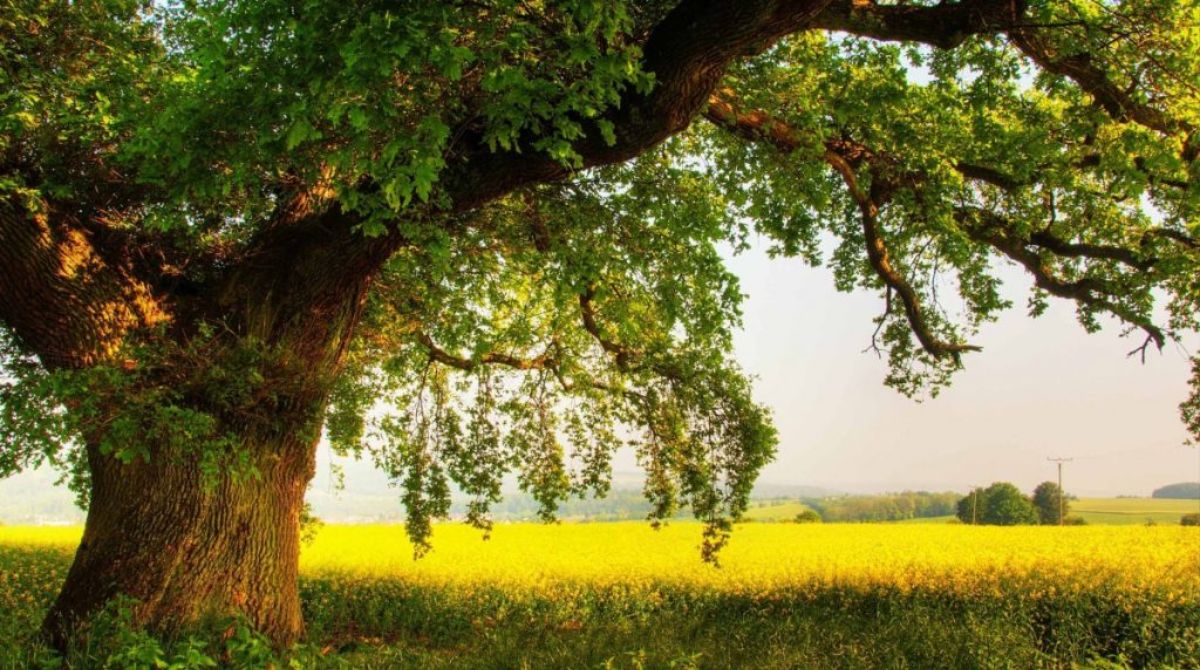
TreeNewal Q&A: Protect Your Trees From Oak Wilt
Date May 20, 2021
Category
It’s Oak Wilt season, so if you have Oak trees on your property, then now until June, July is the time to be on high alert for signs of Oak Wilt. Oak Wilt can have devastating effects in North Texas, where Oak trees are some of the most common shade trees in our yards and urban forests. Oak Wilt can kill an Oak tree in a matter of weeks, and there’s little that can be done to save it once it’s infected. Prevention is your best option. If you want to learn about this deadly tree disease and how to protect your trees from Oak Wilt this season, read TreeNewal’s Q&A below.
Question: What is Oak Wilt?
Answer: Oak Wilt is a vascular wilt pathogen that affects all Oak trees in North Texas. Once the fungus infects a tree, it invades and cripples the tree’s water-conducting systems. Texas Oak Wilt is one of the biggest threats to our Oak trees of Texas. It most commonly affects Red Oak and Lives Oak trees in our area, but it can infect any Oak trees.
Question: How does it spread?
Answer: Oak Wilt can spread by two methods. One way is by Nitidulid Beetles, which are attracted to the sweet-smelling fungal spores produced on red oak trees. They spread the disease by carrying the spores to open wounds on uninfected oak trees. Oak Wilt can spread through root-to-root contact, which makes nearby Oak trees especially susceptible to infection.
Question: Why is Oak Wilt so dangerous for Oak trees?
Answer: Oak Wilt is fast-acting and, in many cases, cannot be treated once the tree is infected. Your Oaktree could die in as few as six weeks after showing symptoms and lead to the deaths of other nearby Oak trees. If you think your tree might be suffering from Oak Wilt, call a tree doctor immediately.
Question: How will I know if my tree has Oak Wilt?
Answer: Oak Wilt first appears as fungal spore mats, which grow under the bark and cause it to crack. However, you probably won’t see this symptom. Fungal mats, especially on Red Oaks, are rarely visible or noticeable. The spores smell sweet and attract the sap-sucking Nitidulid Beetle. The beetles feed on sap from fresh wounds in the tree made from pruning, storm damage, or other injuries and spread the fungus. Once the fungus reaches the vascular tissue, the tree tries to protect itself from the further spread by plugging cells and causing branches to wilt. This will likely be when you first notice the signs of Oak Wilt in late spring or early summer. However, it’s good to keep in mind that Live Oaks and Red Oaks behave differently when infected. Leaf symptoms on Red Oaks look similar to other possible ailments or diseases. At the same time, leaf symptoms on Live Oaks are more distinct to Oak Wilt. In both types, you’ll notice yellowing and then browning leaves at the top of your trees. The individual leaves will begin to brown at the margin toward the end of the leaf and then progress down the margin to the stem. As the leaves brown, they will fall from the tree and litter the ground. Because other Oaktree diseases cause similar symptoms, the best thing you can do if you notice any of these signs is to contact a certified arborist as soon as possible to assess your tree.
Question: Are only young or unhealthy trees vulnerable to Oak Wilt?
Answer: Oak Wilt can infect any susceptible Oaktree, no matter its age or health. If your tree becomes infected with Oak Wilt, it might need to be removed to prevent the spread of infection to nearby trees.
Question: Is treating Oak Wilt possible?
There’s little that can be done in the way of Oak Wilt treatments once a tree is already infected. Red Oaks never survive Oak Wilt and will die within several weeks of showing symptoms. They need to be carefully and quickly removed to prevent further spread. Most Live Oak trees defoliate and die within three to six months after showing symptoms. White Oak trees generally live the longest after exhibiting canopy loss. Sometimes treatments can prolong or prevent the deaths of White Oak or Live Oak trees, but full recovery is doubtful. Reach out to the TreeNewal team if you notice any of the previously mentioned symptoms. Our tree doctors can assess your trees and let you know what, if anything, can be done to save them.
Question: How can I prevent Oak Wilt?
Answer: The best way to prevent the spread of Oak Wilt is to avoid pruning your Oak trees from February through June, when Oak Wilt season is at its peak. This will prevent the Nitidulid Beetle from feeding on the sap from the fresh wounds and spreading the fungal spores. Protection of high-value trees by fungicide injection is also an option as a preventative measure. TreeNewal’s ISA Certified Arborists are specially trained in Oak Wilt prevention, so please reach out as soon as possible if you have questions about fungicide injections or emergency pruning in spring.
Question: What if I need to prune my Oak trees because of winter damage?
Answer: You should only prune your Oak trees in the spring if necessary for safety issues, like if a branch was fatally damaged during the winter and is hanging over your roof, causing an imminent safety hazard. If you do prune, you need to paint the cut immediately to protect it from Oak Wilt disease, no matter the size of the cut. Keep in mind that removing dead or damaged branches can be hazardous and should be done by a professional who has the tools and knowledge to remove them safely. TreeNewal’s tree surgeons are available to help with that.
Question: Other people are pruning their Oak trees in spring. Is it really a big deal?
Answer: It really is a big deal, even though you might see some of your neighbors outside trimming Oak trees in the spring. They are putting their trees, and unfortunately, all nearby Oak trees, at risk of infection. If you’re working with a reputable tree care service, they will refuse to prune Oak trees during spring. A professional tree service will know when to trim Oak trees and insist on waiting until the proper season for pruning Oak trees to avoid Oak Wilt disease.
Question: Who should I call if I think my tree has Oak Wilt?
Answer: Work with a professional tree care company like TreeNewal certified in preventing and treating Oak Wilt and has the tools and knowledge to perform safe tree removal techniques, including disposing of diseased materials and performing other preventative measures to stop further spread of Oak Wilt. TreeNewal is here to help and can handle the removal of infected trees safely and effectively.
TreeNewal can handle all your Oaktree health care needs.
If you think your tree might be sick or dying from Oak Wilt or any other disease, fungus, or pests, you should immediately reach out to a certified arborist tree service. TreeNewal’s ISA Certified Arborists are specially trained in Oak Wilt Texas prevention and treatment. At TreeNewals, we have multiple ISA Certified Arborists on staff and a team of highly qualified tree care experts. Our tree doctors in Dallas care about tree health care in all stages of the tree’s life cycle. TreeNewal offers expert tree care services, such as tree trimming, tree pruning, pest and disease control, root aeration, and more. If your tree is past the point of saving, we also offer tree care services such as tree removal and trunk removal. We are equipped to safely dispose of any infected trees, branches, or stumps. For more information, go to our website at treenewal.com. To set up an appointment, call us at tel:(817) 592-6846.
To learn more about TreeNewal Q&A: Protect Your Trees From Oak Wilt, call our Argyle and Southlake-based teams
at tel:(817) 592-6846 or send us a message.
We’re a little different than the average tree services company.
Learn more about TreeNewal’s ISA Certified Arborists!
Our Dallas/Fort Worth-based tree doctors can explain how sustainable tree care services add more value to your bottom line.
Healthy trees, healthy lives.








